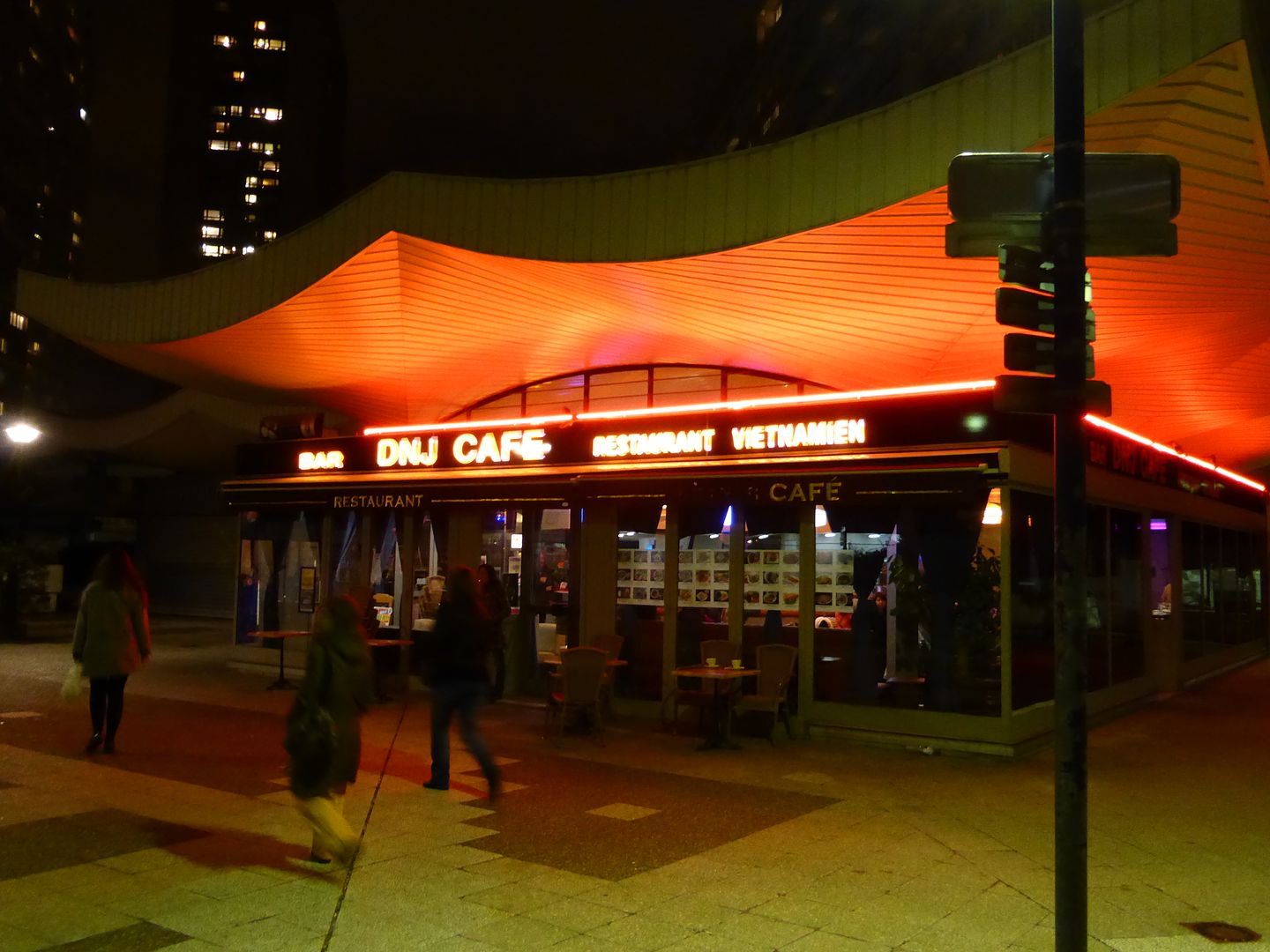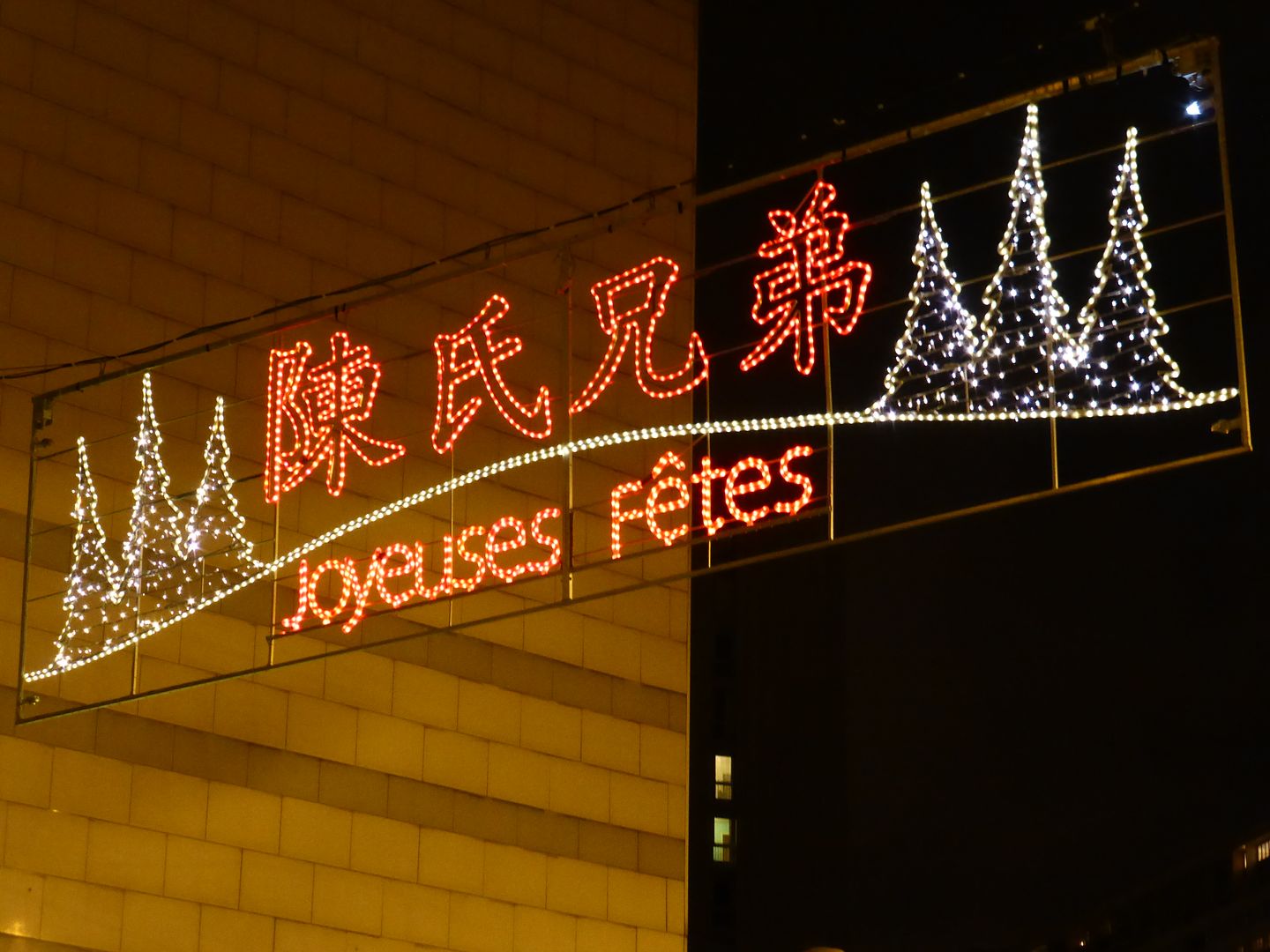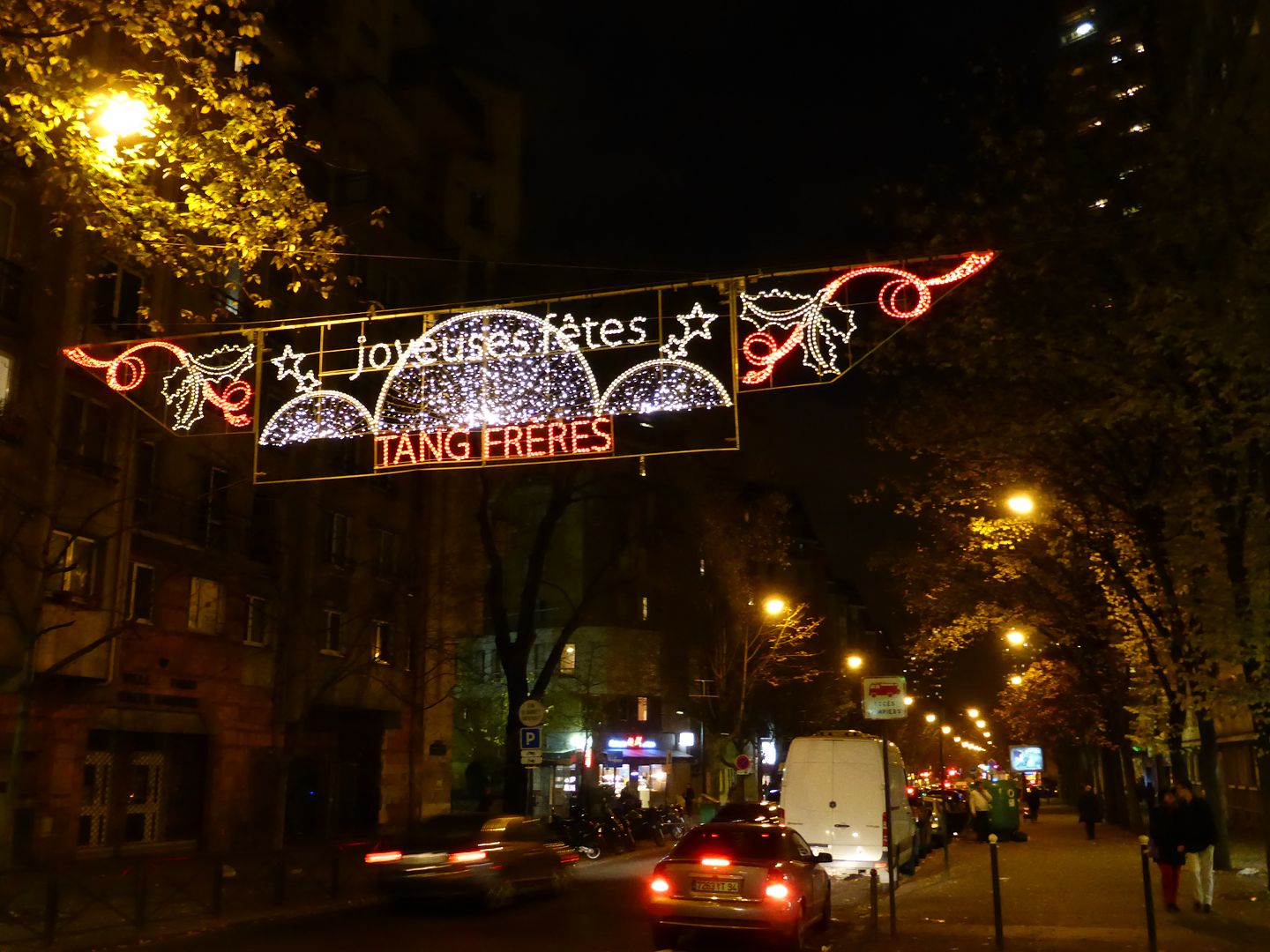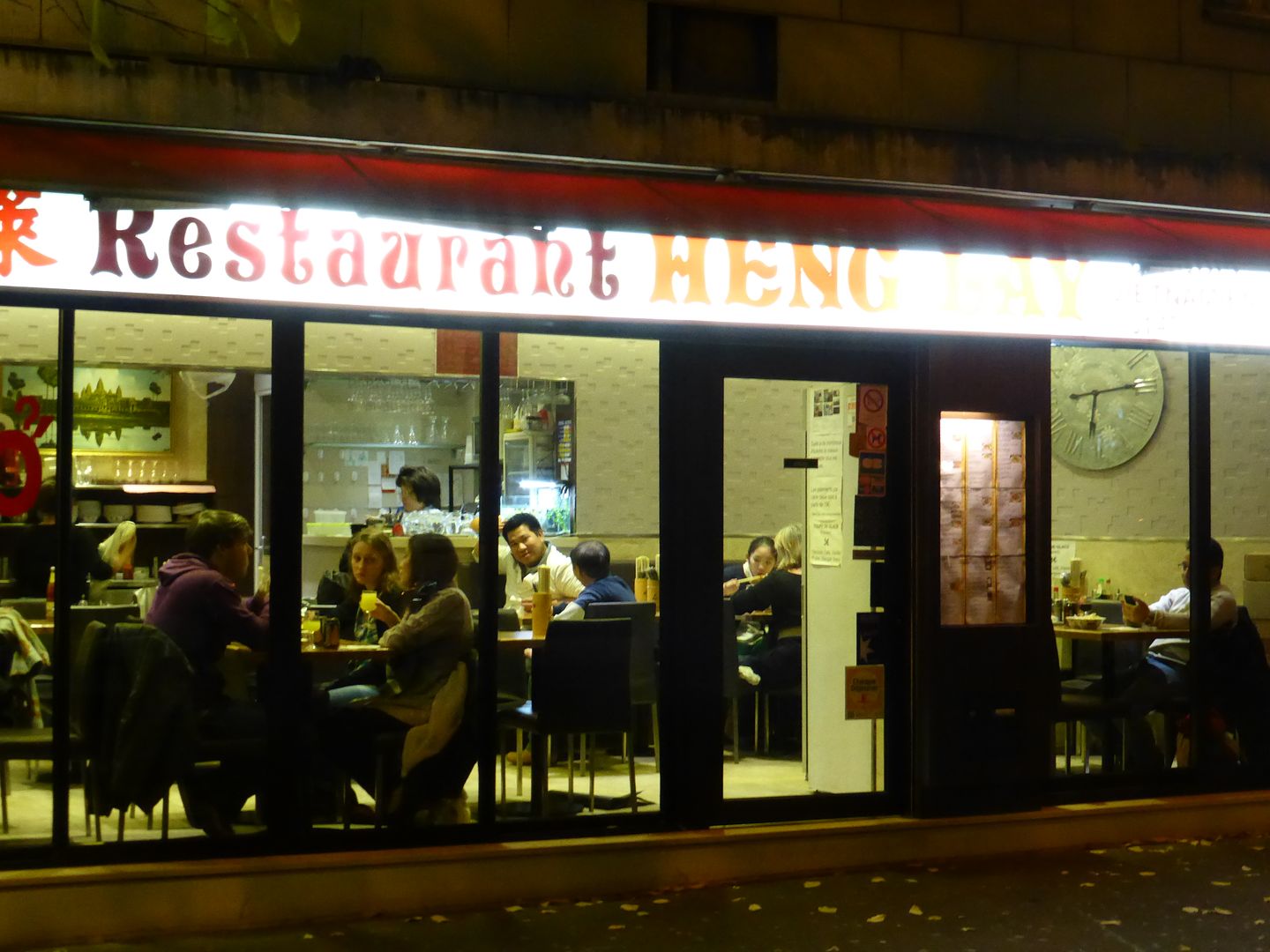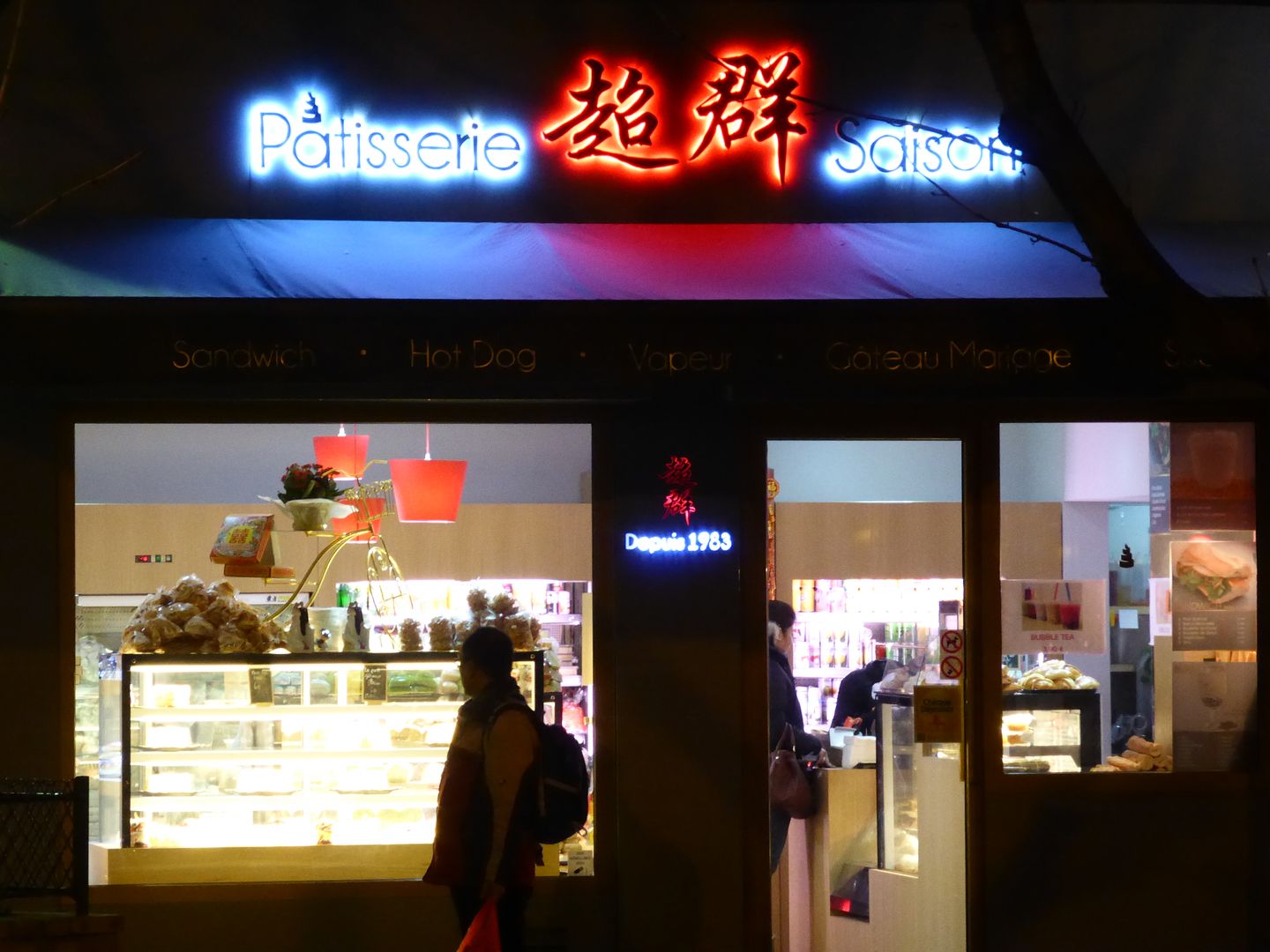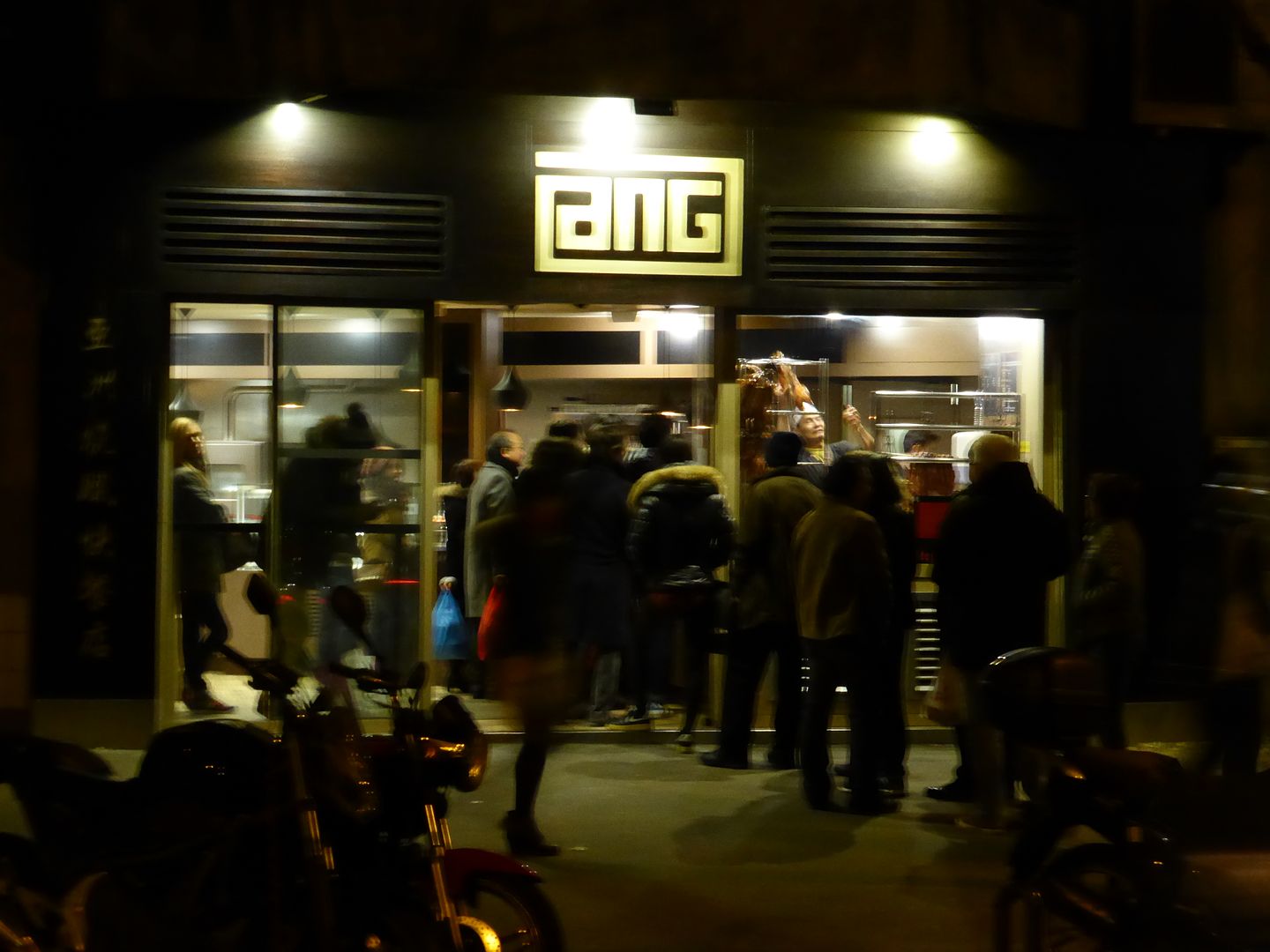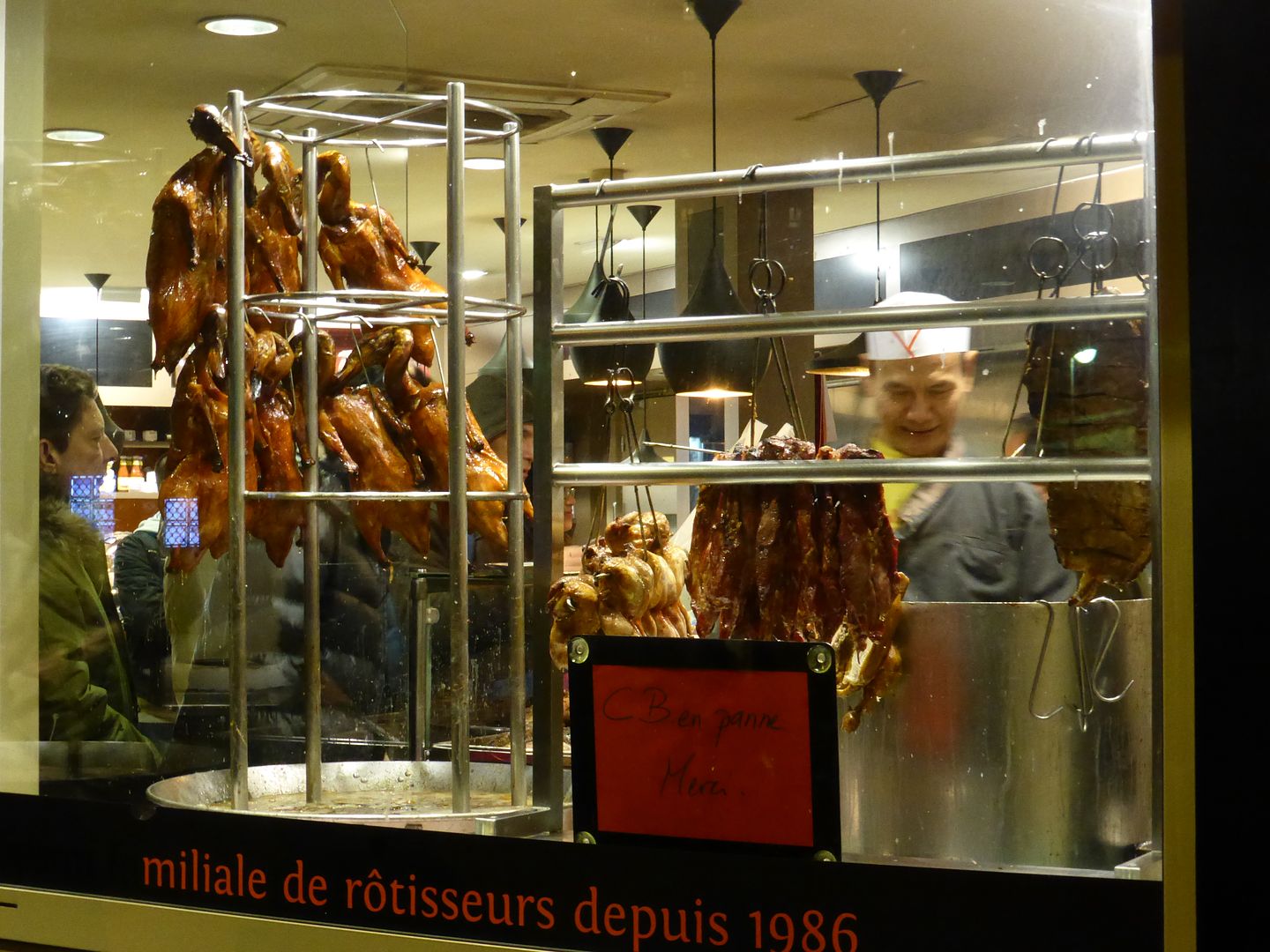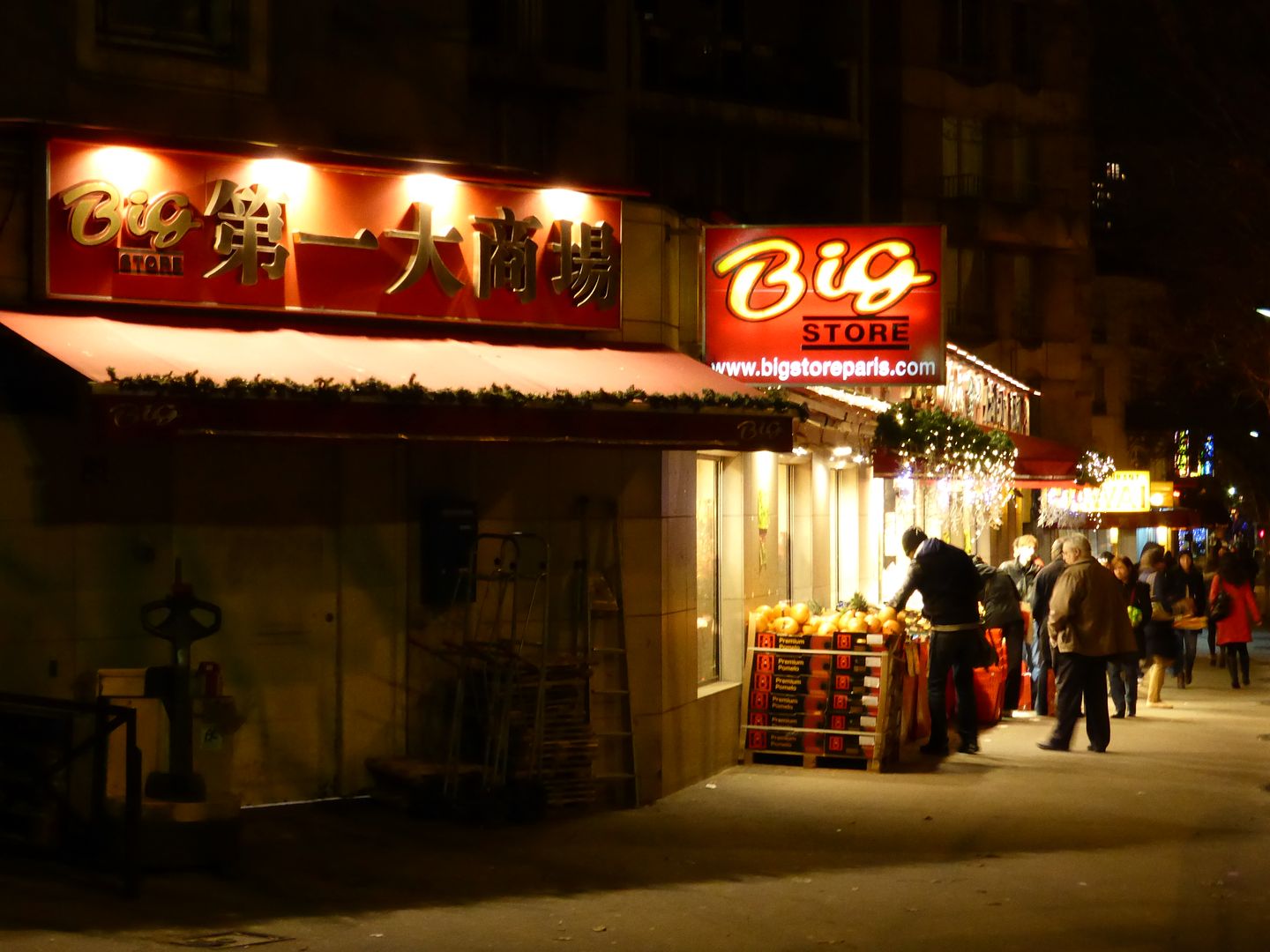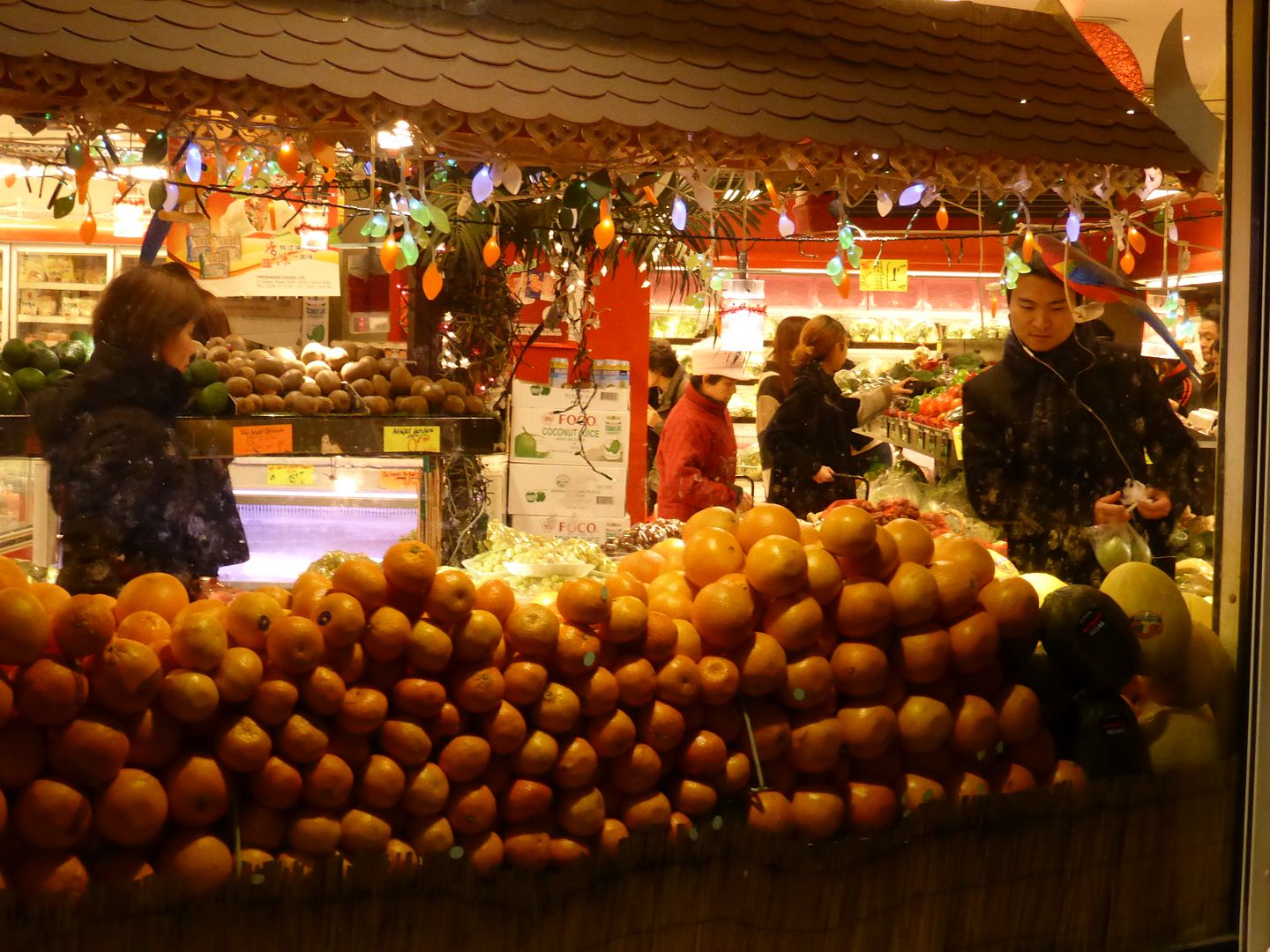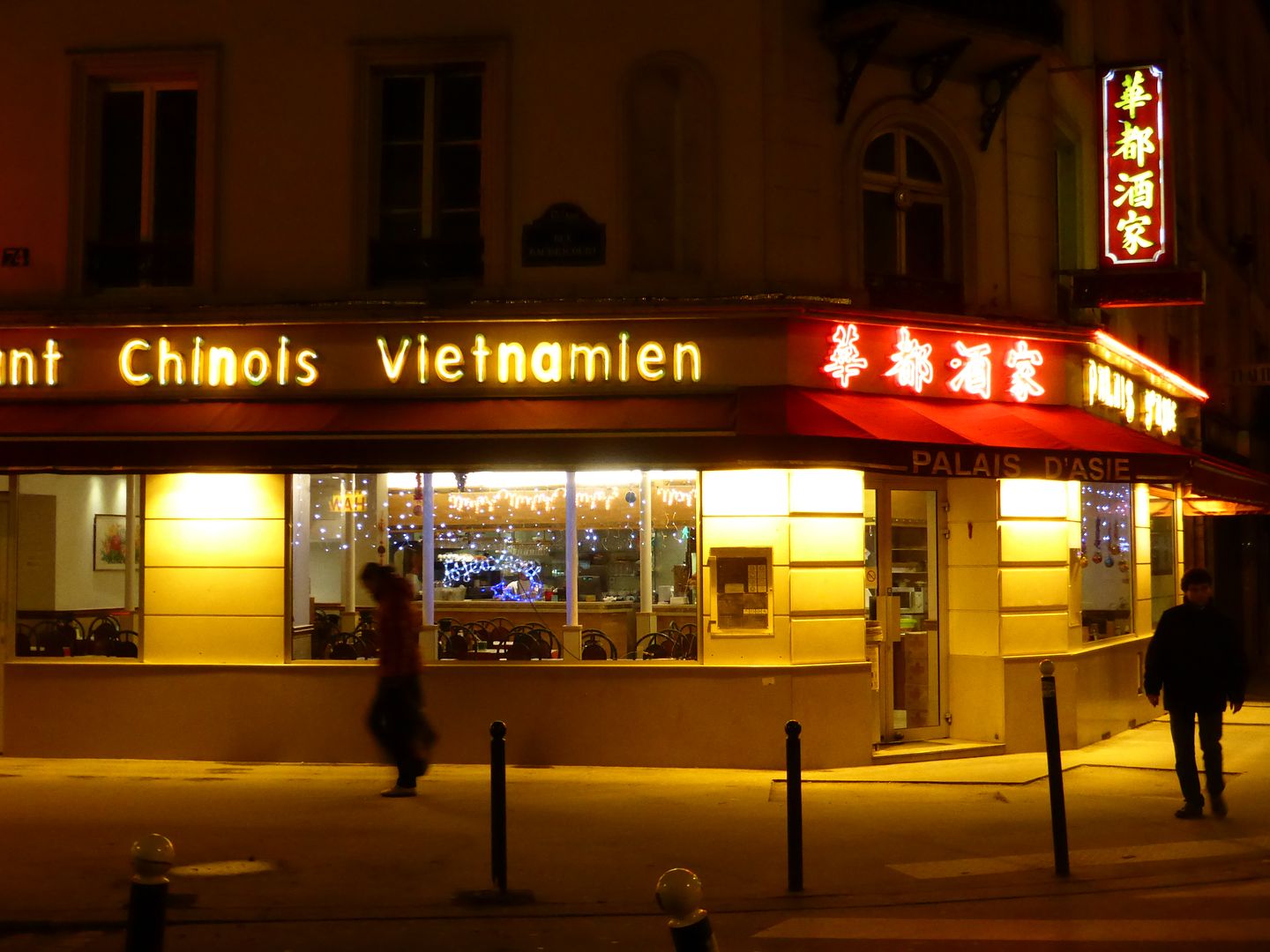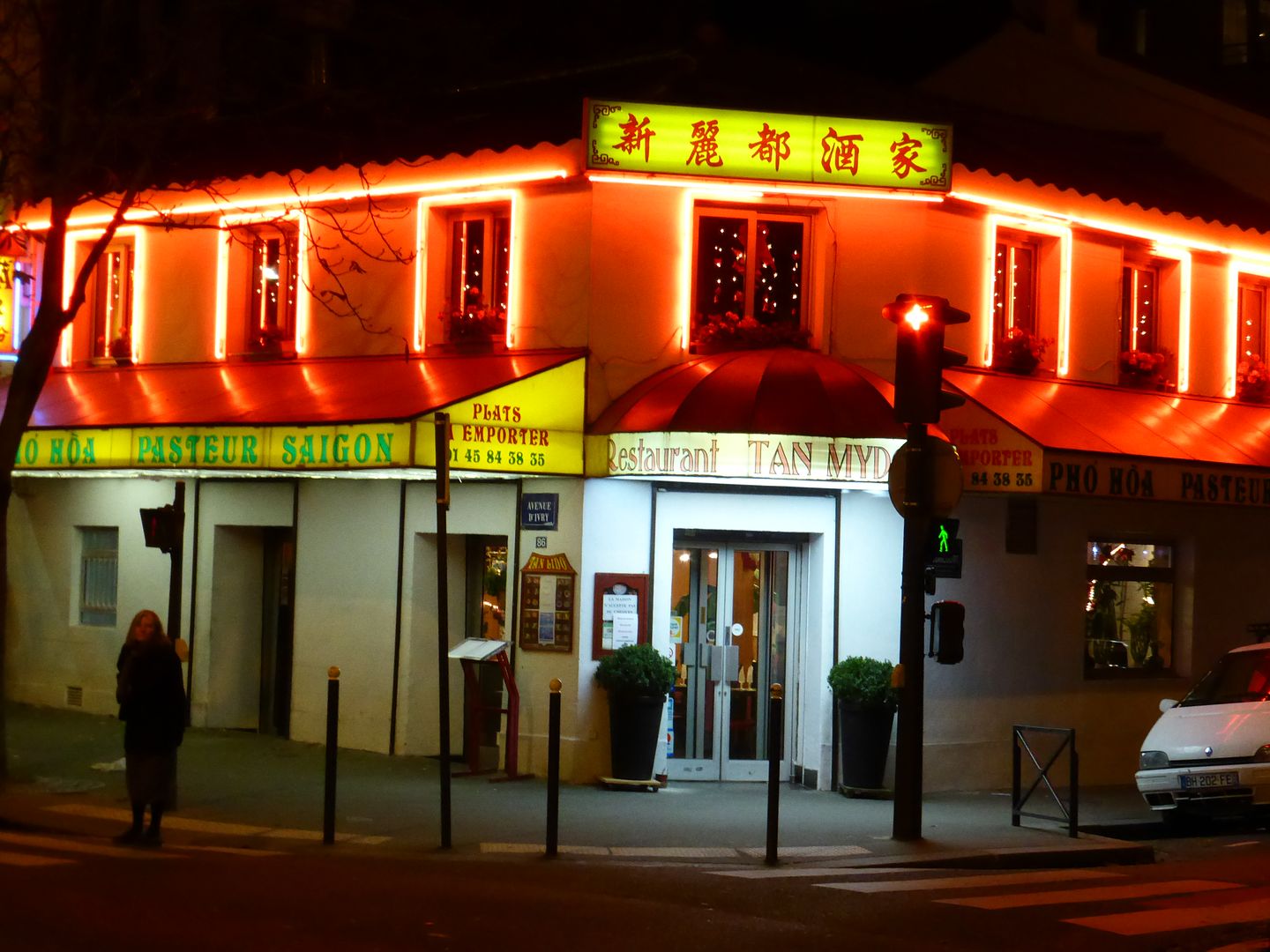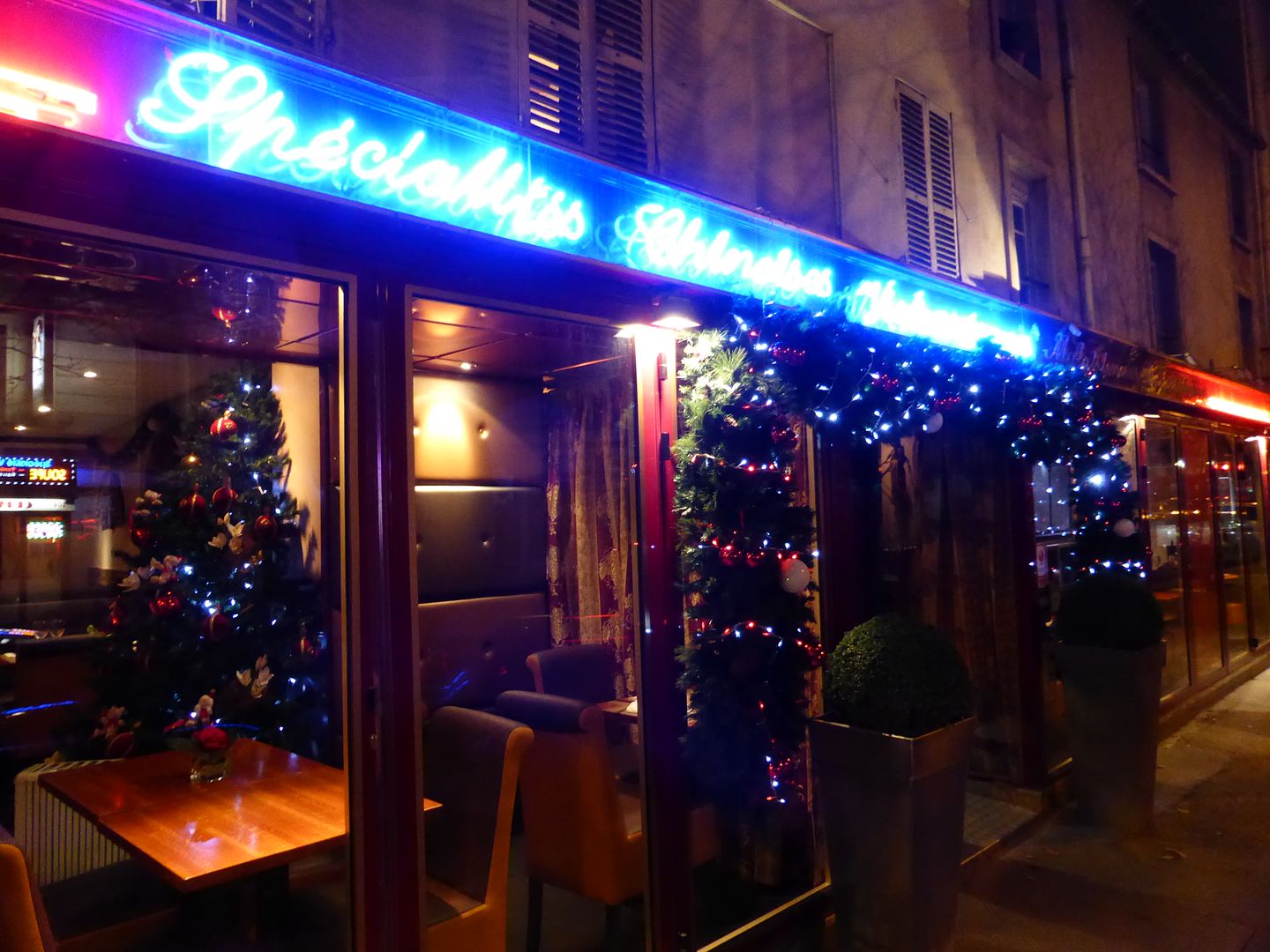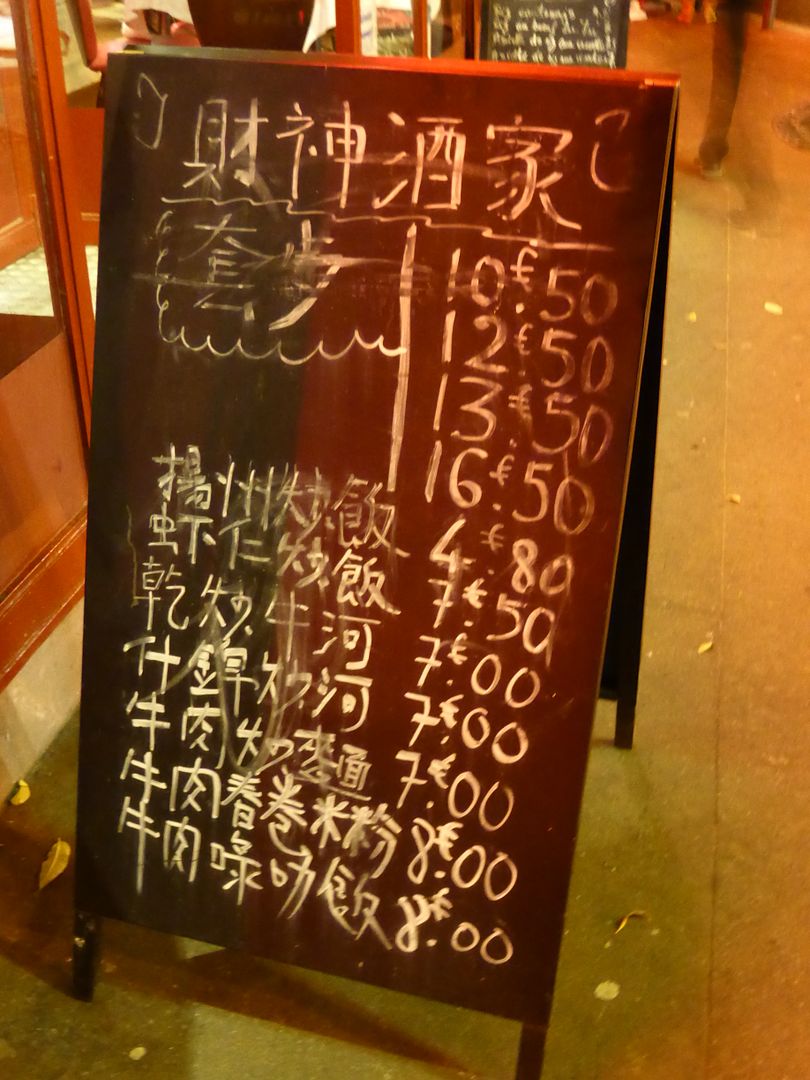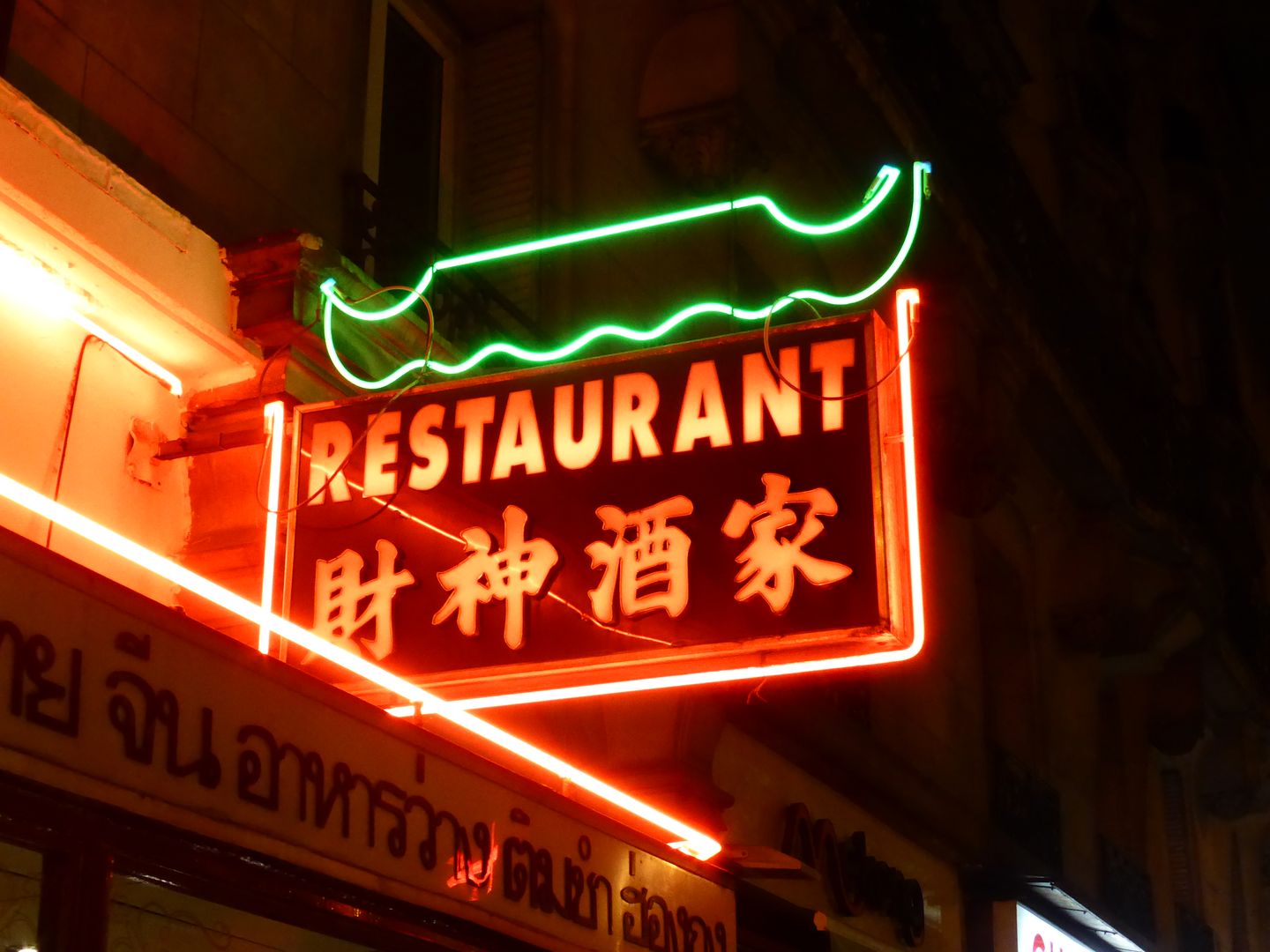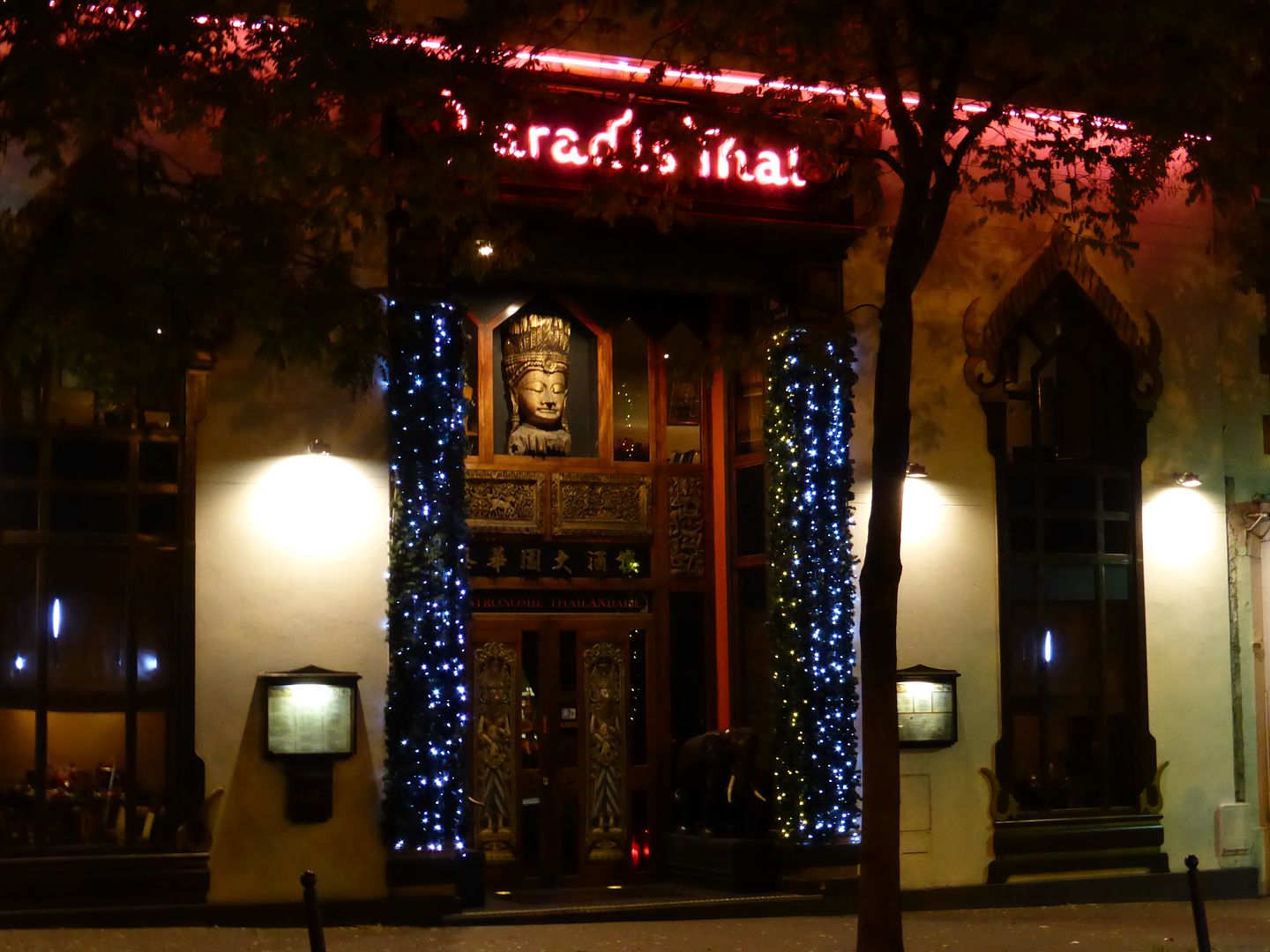Chinatown in Paris redux
May 2, 2009 19:00:26 GMT
Post by Deleted on May 2, 2009 19:00:26 GMT
It has been requested that I repatriate a post originally created elsewhere to give news of the main Chinatown in Paris. So, here it is.
Here is a report about the biggest Chinatown in Paris (the city has 4 different Chinatowns, plus another 2 or 3 in the suburbs). The Asian population of the 13th arrondissement is estimated at about 40,000 -- always hard to estimate because France refuses to keep official ethnic statistics. The total Asian population of the Paris metropolitan area is estimated to be around 150,000.
Anyway, a good place to start the tour is to take the metro to the Olympiades station on line 14.

Line 14 is the most modern line of the metro, only 10 years old, and the trains are 100% automatic with no driver.
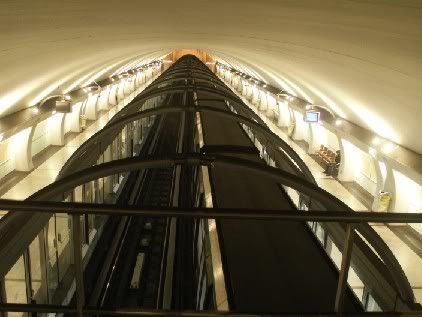
The name of the station is the name of the neighborhood, which was built during the presidency of Georges Pompidou. He decreed that "Paris is not a museum" and made a point of tearing down old things to put up new buildings. The 13th arrondissement was pretty much a run down slum at that time, so there was not much opposition to tearing down big sections of it to build high rise apartment blocks. One of the biggest projects was the Olympiades, with each building named after a city that hosted the Olympics, both summer and winter.
It makes for some strange signs in the area.

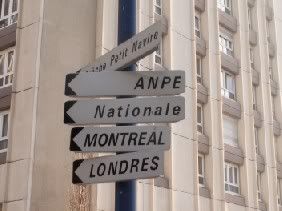
There are several charts to help you find the Olympiade of your choice.
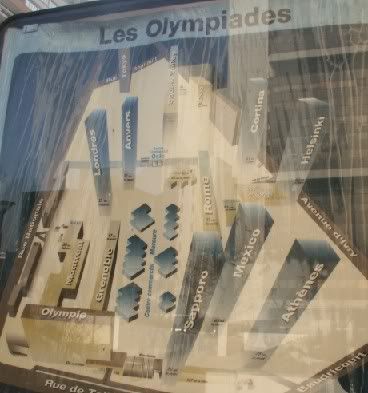
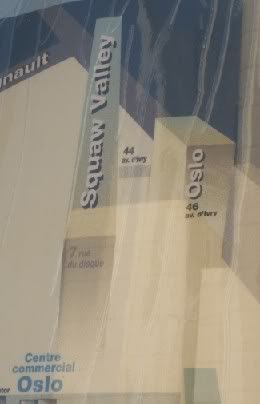
Yes, you can live in Paris and nevertheless claim that you live in Squaw Valley.
These buildings were completed in the early years of the 1970's. Unfortunately, the French did not want to live in such things. Thank god for the boat people in 1975! They were ready to live in anything not run by the Viet Cong, the Khmer Rouge or the Pathet Lao.
There is a big, rather ugly pedestrian zone between the buildings. Strangely enough, before anybody ever knew that Asians would be living there, the shops in that area were all built in pagoda style.


Same as anywhere else, the style of architecture never stopped the Chinese from throwing in temples wherever they felt was an appropriate location.


However, our first destination is the delightful Oslo shopping center.

Welcome to Oslo!
It is a complete change of continent when you enter the Oslo mall.



It is interesting to note that the Chinese often hire African butchers. It is the same in my neighborhood. I also saw that a number of the cooks in the local restaurants were Indian and Pakistani.

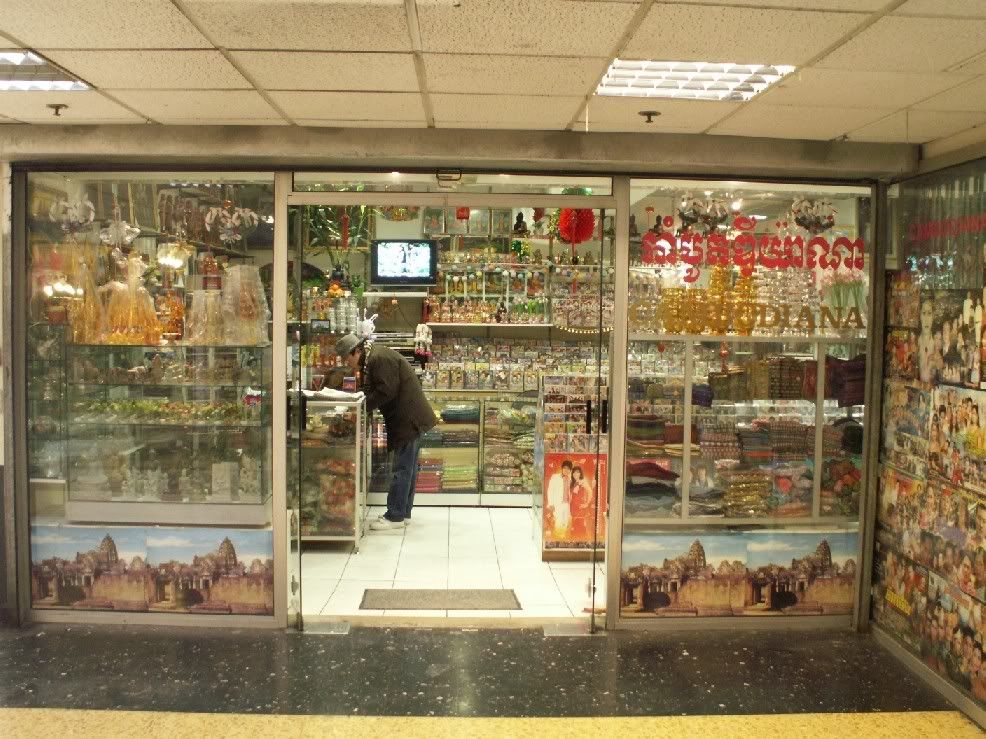
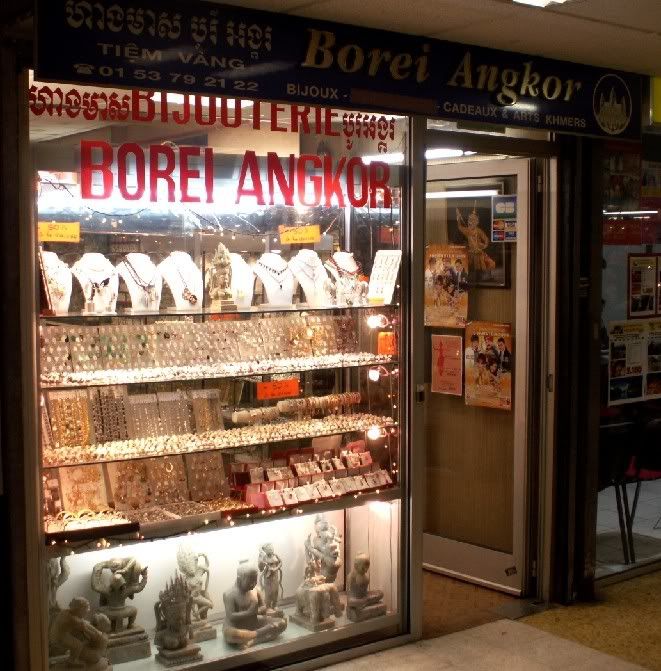
Next it was time to visit the Tang Frères supermarket. There are several Tang locations in Paris and the suburbs, but the most popular one is their original location which is a warehouse building in a hidden courtyard. The Tang brothers are from Laos, and they are the biggest customers of Air France Cargo in the world for perishables.
I love just looking at the shelves, vegetable displays and frozen food bins in that place.


More dim sum than you could ever need! (But most of the Asian restaurants in Paris buy their products from Tang of the competitors "Paris Store.")

Beer imported from Asia is often cheaper than the European beer on sale. And Tang Frères is the only place I know where I can find my beloved Beerlao (not that it is very good, but there are so many memories attached to it).
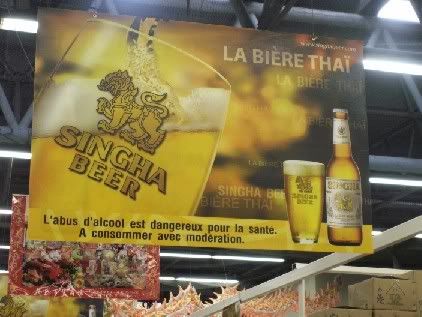

Some of the products are truly mysterious to me. The purple stuff is igname purée or some such. It is an African tuber somewhere between a potato and a yam. Do the Asians really use it in their cooking?
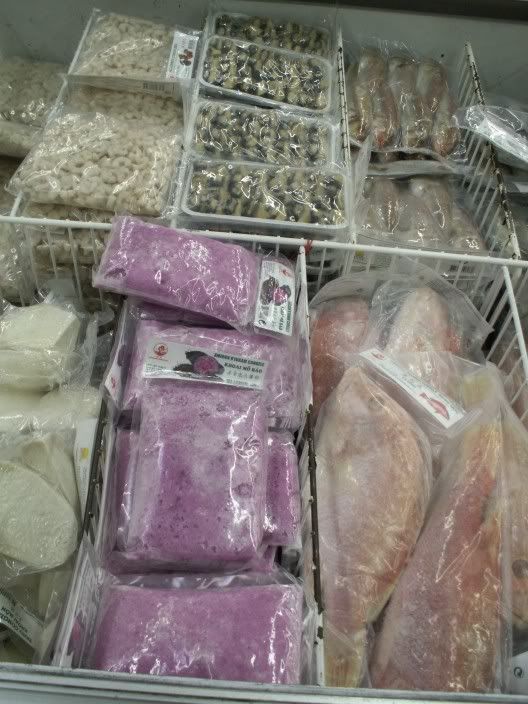
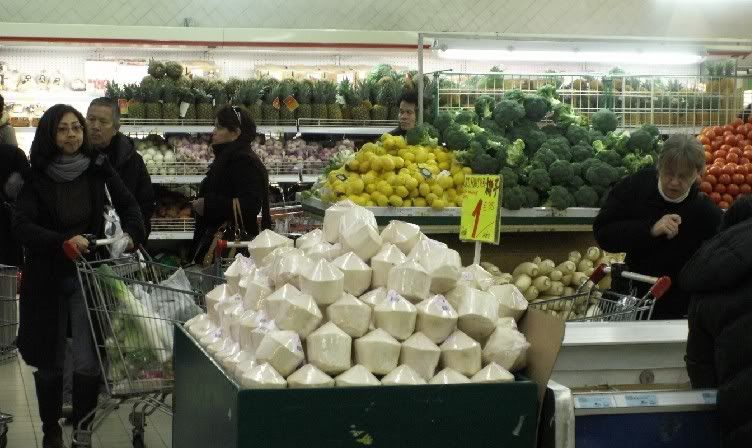
The cost of Southeast Asian fruits and vegetables remains incredibly reasonable, considering the air cargo rates and everything else regarding the export, import and transport. In recent years, Tang has started wrapping quite a bit of the produce to keep it fresh as long as possible and to prevent pawing hands from damaging the goods as they used to.

A final remark about Tang. As strange as it appears to a lot of us, even they sell tinned bean sprouts, and they even have a house brand. Is there an Asian around who can tell us any good use of tinned bean sprouts?

Just a few steps from Tang Frères is their main competitor, Paris Store. While Tang is a bigger operation, Paris Store appears to have a wider vision of commerce, because they have supermarkets in various regional cities of France, while Tang is only in the Paris metropolitan area.
Both of them are "exclusive" importers of various products, so you always have to remember which brand one or the other sells to buy it from them, or else pay more at a smaller shop which gets products from both.

Paris Store has a completely separate frozen food supermarket.

As a break from exclusively Asian sights, if you continue down the same street, you reach one of the Paris tramway lines, completely unknown to most visitors.

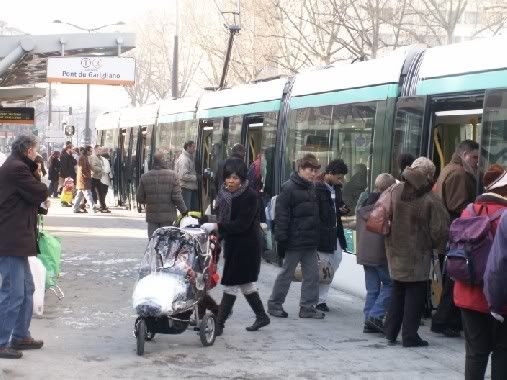
There are also some big bicycle stations. For some strange reason, when there is a lot of snow and ice, the municipal bicycles are less popular.

No neighborhood in a large European city is complete without a McDonald's. This one is a little different from most of the others.
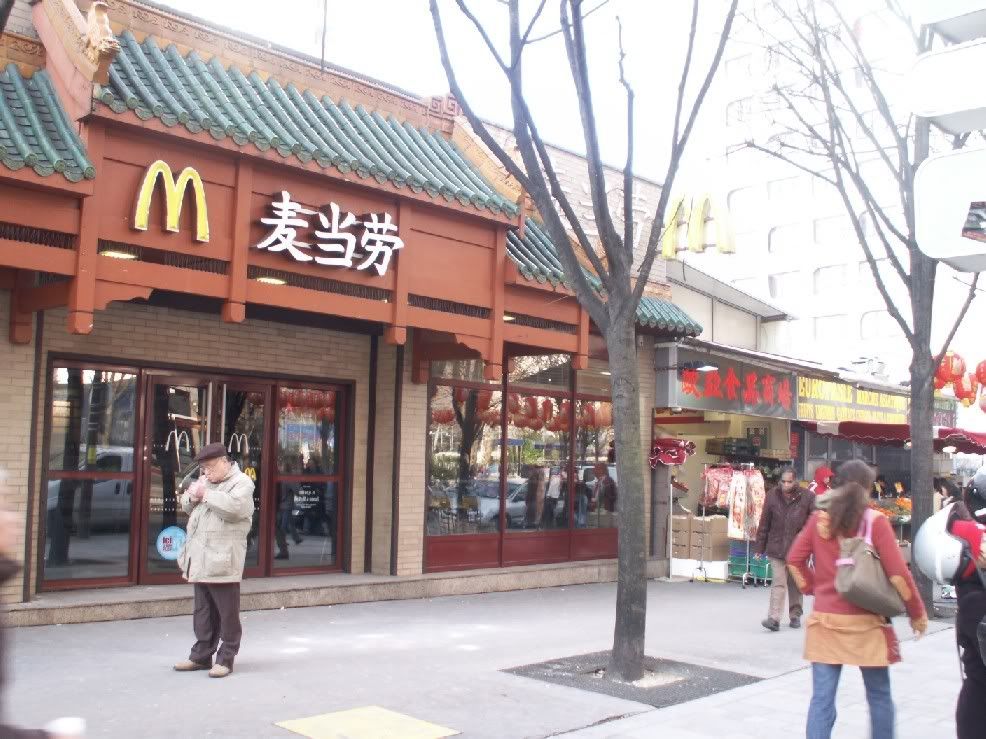

There are so many eating possibilities, it is hard to choose. Tricotin 1 or Tricotin 2? Decisions, decisions...
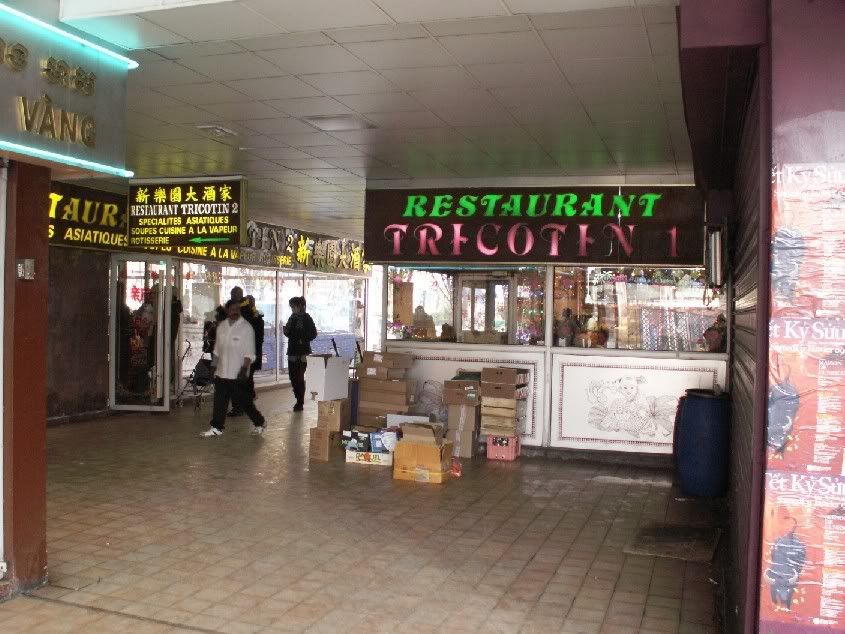
Roast duck or pig or spare ribs?

Often, tourists in Paris complain that meal hours are too restrictive. Places don't serve early enough, or they close too early. They should come here.

Then there are the people who say that the portions are too small. How about an unlimited buffet?

My own favorite restaurant in the area is this one, "La Lune." This the only photo not taken today, because the one I took today was crappy. Therefore there are leaves on the tree.

I will admit that I have not tried 98% of the other restaurants in the area. Normally, you find a new restaurant because your own place is unexpectedly closed or too crowded. That doesn't happen too often.
Nevertheless, I saw today from the article displayed in the window that I share my taste with an apparently famous Hong Kong billionaire.

It was time to start heading back to more traditional Paris. But there were still a number of things to see.
This woman became very angry when she saw me photographing her preparing her Vietnamese baguette sandwiches.

All of the shops still had an abundance of lychees, a traditional French Christmas fruit from the other side of the world. This store was selling 5 different kinds, but here are just two of them.

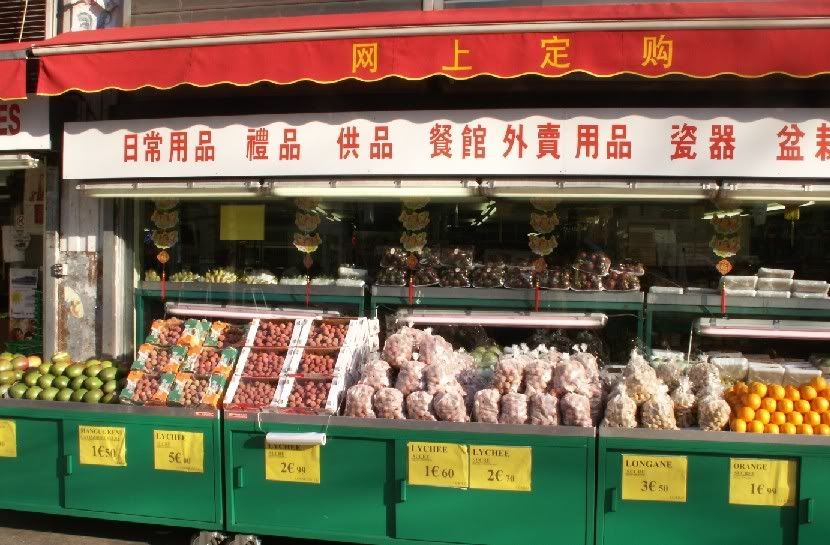
I passed "Our Lady of China" on the way to the metro. Sunday mass in Chinese is actually held in a big church next door to this little chapel.

Chinese pastry? Should it exist? I'm not sure.

Do you know what a durian smells like? Should I bring a big whipped cream and durian cake for dessert at your place?

I do enjoy the typical Chinese way that sweet and savory can co-exist on the same display.

One of the most intriguing things that I saw on today's walk was the one and only Asian restaurant that had signs and menus only in French. I found it oddly appealing. I'm not sure why.


One last restaurant for those who want to spend more money.
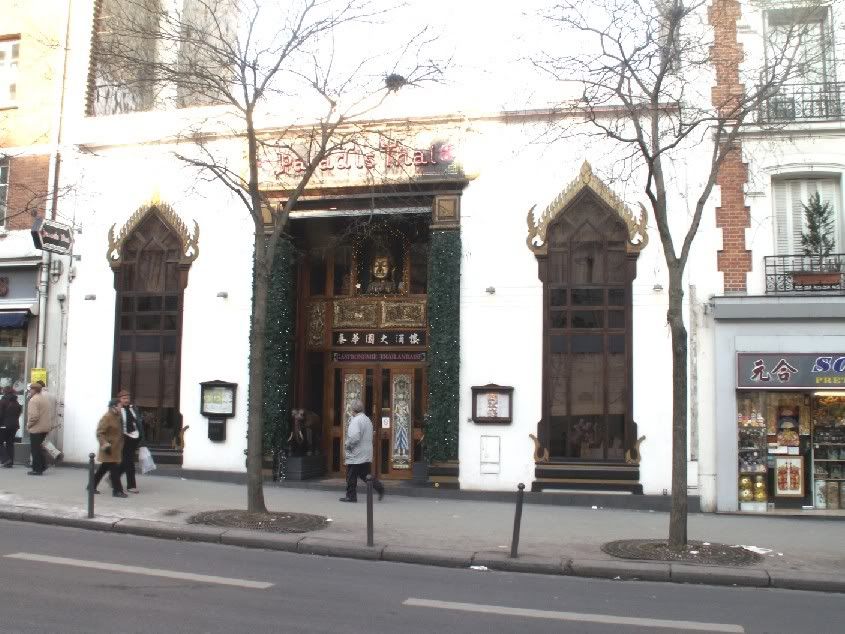
Suddenly I arrived at the Tolbiac metro station and my brief trip to Asia had ended.

Thank you for joining me on this little excursion.
Here is a report about the biggest Chinatown in Paris (the city has 4 different Chinatowns, plus another 2 or 3 in the suburbs). The Asian population of the 13th arrondissement is estimated at about 40,000 -- always hard to estimate because France refuses to keep official ethnic statistics. The total Asian population of the Paris metropolitan area is estimated to be around 150,000.
Anyway, a good place to start the tour is to take the metro to the Olympiades station on line 14.

Line 14 is the most modern line of the metro, only 10 years old, and the trains are 100% automatic with no driver.

The name of the station is the name of the neighborhood, which was built during the presidency of Georges Pompidou. He decreed that "Paris is not a museum" and made a point of tearing down old things to put up new buildings. The 13th arrondissement was pretty much a run down slum at that time, so there was not much opposition to tearing down big sections of it to build high rise apartment blocks. One of the biggest projects was the Olympiades, with each building named after a city that hosted the Olympics, both summer and winter.
It makes for some strange signs in the area.


There are several charts to help you find the Olympiade of your choice.


Yes, you can live in Paris and nevertheless claim that you live in Squaw Valley.
These buildings were completed in the early years of the 1970's. Unfortunately, the French did not want to live in such things. Thank god for the boat people in 1975! They were ready to live in anything not run by the Viet Cong, the Khmer Rouge or the Pathet Lao.
There is a big, rather ugly pedestrian zone between the buildings. Strangely enough, before anybody ever knew that Asians would be living there, the shops in that area were all built in pagoda style.


Same as anywhere else, the style of architecture never stopped the Chinese from throwing in temples wherever they felt was an appropriate location.


However, our first destination is the delightful Oslo shopping center.

Welcome to Oslo!
It is a complete change of continent when you enter the Oslo mall.



It is interesting to note that the Chinese often hire African butchers. It is the same in my neighborhood. I also saw that a number of the cooks in the local restaurants were Indian and Pakistani.



Next it was time to visit the Tang Frères supermarket. There are several Tang locations in Paris and the suburbs, but the most popular one is their original location which is a warehouse building in a hidden courtyard. The Tang brothers are from Laos, and they are the biggest customers of Air France Cargo in the world for perishables.
I love just looking at the shelves, vegetable displays and frozen food bins in that place.


More dim sum than you could ever need! (But most of the Asian restaurants in Paris buy their products from Tang of the competitors "Paris Store.")

Beer imported from Asia is often cheaper than the European beer on sale. And Tang Frères is the only place I know where I can find my beloved Beerlao (not that it is very good, but there are so many memories attached to it).


Some of the products are truly mysterious to me. The purple stuff is igname purée or some such. It is an African tuber somewhere between a potato and a yam. Do the Asians really use it in their cooking?


The cost of Southeast Asian fruits and vegetables remains incredibly reasonable, considering the air cargo rates and everything else regarding the export, import and transport. In recent years, Tang has started wrapping quite a bit of the produce to keep it fresh as long as possible and to prevent pawing hands from damaging the goods as they used to.

A final remark about Tang. As strange as it appears to a lot of us, even they sell tinned bean sprouts, and they even have a house brand. Is there an Asian around who can tell us any good use of tinned bean sprouts?

Just a few steps from Tang Frères is their main competitor, Paris Store. While Tang is a bigger operation, Paris Store appears to have a wider vision of commerce, because they have supermarkets in various regional cities of France, while Tang is only in the Paris metropolitan area.
Both of them are "exclusive" importers of various products, so you always have to remember which brand one or the other sells to buy it from them, or else pay more at a smaller shop which gets products from both.

Paris Store has a completely separate frozen food supermarket.

As a break from exclusively Asian sights, if you continue down the same street, you reach one of the Paris tramway lines, completely unknown to most visitors.


There are also some big bicycle stations. For some strange reason, when there is a lot of snow and ice, the municipal bicycles are less popular.

No neighborhood in a large European city is complete without a McDonald's. This one is a little different from most of the others.


There are so many eating possibilities, it is hard to choose. Tricotin 1 or Tricotin 2? Decisions, decisions...

Roast duck or pig or spare ribs?

Often, tourists in Paris complain that meal hours are too restrictive. Places don't serve early enough, or they close too early. They should come here.

Then there are the people who say that the portions are too small. How about an unlimited buffet?

My own favorite restaurant in the area is this one, "La Lune." This the only photo not taken today, because the one I took today was crappy. Therefore there are leaves on the tree.

I will admit that I have not tried 98% of the other restaurants in the area. Normally, you find a new restaurant because your own place is unexpectedly closed or too crowded. That doesn't happen too often.
Nevertheless, I saw today from the article displayed in the window that I share my taste with an apparently famous Hong Kong billionaire.

It was time to start heading back to more traditional Paris. But there were still a number of things to see.
This woman became very angry when she saw me photographing her preparing her Vietnamese baguette sandwiches.

All of the shops still had an abundance of lychees, a traditional French Christmas fruit from the other side of the world. This store was selling 5 different kinds, but here are just two of them.


I passed "Our Lady of China" on the way to the metro. Sunday mass in Chinese is actually held in a big church next door to this little chapel.

Chinese pastry? Should it exist? I'm not sure.

Do you know what a durian smells like? Should I bring a big whipped cream and durian cake for dessert at your place?

I do enjoy the typical Chinese way that sweet and savory can co-exist on the same display.

One of the most intriguing things that I saw on today's walk was the one and only Asian restaurant that had signs and menus only in French. I found it oddly appealing. I'm not sure why.


One last restaurant for those who want to spend more money.

Suddenly I arrived at the Tolbiac metro station and my brief trip to Asia had ended.

Thank you for joining me on this little excursion.





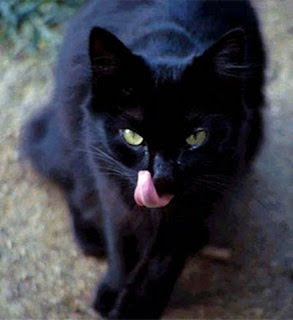

 Since I appear to have hosted this thread at Image Shack, maybe it is because of their new posting restrictions for free users.
Since I appear to have hosted this thread at Image Shack, maybe it is because of their new posting restrictions for free users. 
